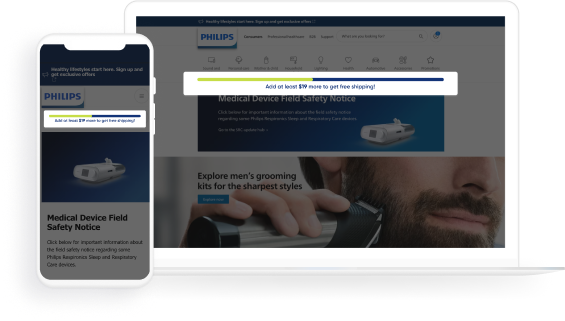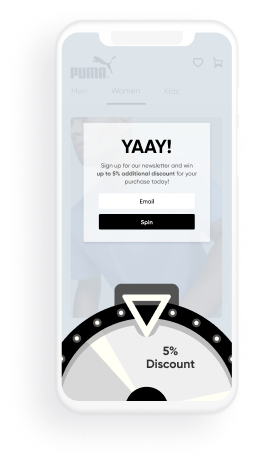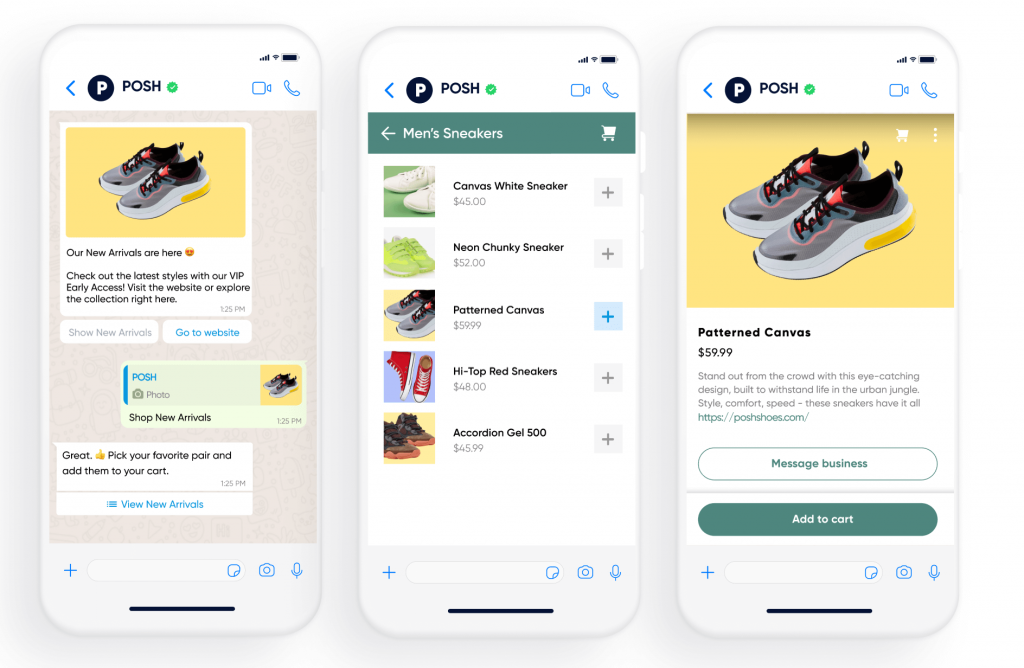 Katie Morley
Katie Morley
Aug 21, 2023
 Katie Morley
Katie Morley
Aug 21, 2023
Peak sales season is a marketer’s dream. There are campaigns, offers and exclusives to tempt shoppers, helping brands deliver on their bottom line. This means getting the right strategy is crucial—and, as always, we’re on hand to show you how it’s done.
With some slick marketing hacks and innovative solutions, we bring together practical tips, insights, and expertise from brands that are taking peak season marketing to new heights.
Get ready for your best peak season yet!
What is peak season marketing?
Preparation
Digital experience
Gamification
Mobile
Get set for peak season 2023
FAQs
Peak season marketing refers to the strategies used by brands to boost sales. Starting at Halloween and finishing on New Year’s Eve, the peak sales season can generate a significant percentage of yearly revenue, so it’s important to create engaging campaigns that will help your brand maximize its potential.
As the old adage goes; fail to prepare, prepare to fail. And this is something digital experience analytics platform, Contentsquare, knows all too well.
They understand that every marketing strategy worth its salt relies on careful preparation, so it’s important to think strategically and make the necessary adjustments to your website before peak season hits.
Their number one tip is to assess the key areas of your website that need optimizing, and pay close attention to your checkout process. This needs to be quick, easy, and high-performing; the last thing you want is a high bounce rate for your seasonal customers.
To avoid this, Sam Counterman from Contentsquare recommends reviewing your checkout funnel before you get to work on your peak season marketing strategy. Test everything to ensure your checkout is working as efficiently as it should be.
When you’re good to go, you can add conversion-focused tools to improve your CVR and AOV, such as Insider’s progress bar.
Philips wanted to boost AOV by implementing a simple, innovative onsite solution. Insider’s growth experts recommended adding a progress bar to the checkout page, which reminded customers how far away they were from free shipping.
This visible, real-time engagement improved AOV by a whopping 35.2%—proving that a small checkout optimization can really make an impact.


When it comes to peak season marketing strategies, the digital experience shouldn’t be underestimated. Friction in this process can make or break your peak season success, so it’s crucial to deliver seamless purchasing experiences that meet (and exceed) customer expectations.
You can do this by reducing your load speed, which is one of the biggest customer frustrations when buying online. Contentsquare’s 2023 Retail Digital Experience Benchmark report found that slow-loading pages (those which take more than 3 seconds) were the biggest friction factor, impacting 1 in 5 retail site sessions.
This can damage your customer’s experience with your brand and impact bounce rates. Contentsquare found that bounce rates on retail sites decrease from 47.7% when load time is over 2 seconds to 43.8% when it’s less than 1 second.
If this wasn’t enough, slow load speed can also affect customer loyalty and Google rankings, and hurt your revenue too. So it’s a good idea to improve your load time as soon as possible.
“Put yourself in the driving seat as a customer; when you’re browsing or shopping online, you expect quick, fast results to meet your needs and wants in that moment. Brands that prioritize delivering a fast and contextual UX will always score well with both Google and customer loyalty.”
- Sam Counterman | Vice President of Brand & Growth Marketing, Contentsquare
This can be achieved by:
· Using cache more frequently: This boosts site performance and reduces the load on your original infrastructure, allowing your core resources to handle more dynamic transactions like checkout.
· Utilizing a CDN: It’s helpful to use a Content Delivery Network (CDN) to load most web traffic from your servers, as it will prevent them from getting overloaded during peak season.
· Downsizing JS files: One common issue that affects load speed is high volumes of JavaScript (JS) files. This can be resolved by pre-sizing and compressing images for both mobile and desktop.
Looking for more tips on enhancing your digital experience? Our new peak season ebook is packed with insights and advice on boosting sales during peak season.
The most successful brands know how to optimize gamification during peak season marketing. It brings fun and interactive elements to the table, encouraging users to take a desired action.
Website visitors are more likely to become customers with games over generic lead collection forms—and there is some interesting psychology behind it. Gamification gives users a sense of control and reinforces good behaviors; for example, if customers sign up for a newsletter, they instantly receive a discount for their first order. This gives them the motivation to stay on a given website for longer as they browse products and place an order using the discount code they’ve been given.
At Insider, we suggest incorporating game design elements into your peak season campaigns to increase customer loyalty while boosting revenue. This helps brands create a unique and memorable experience for customers, which is critical during peak season; at a time when customers are inundated with advertisements and messages from multiple brands, gamification provides plenty of opportunities to stand out from the crowd.
Puma was using a conventional lead-generation template but was struggling to see good customer engagement and conversion rates. Insider suggested implementing a gamification template to tackle this challenge head-on.
We recommended adding a spin-the-wheel overlay onto the website, providing an interactive experience where users could win a discount coupon if they filled in their details and played the game.
The result? A 163% increase in coupon code usage from their gamification campaign.

As over half of all traffic comes from mobile during the peak season, mobile optimization is vital. High-quality mobile experiences offer convenience for customers on the go, which in turn can create more engagement and sales.
Brands can enhance their mobile offerings by leveraging the power of two-way, conversational buying experiences with Insider’s WhatsApp Commerce, which gives your audience the power to discover, browse, and buy your products without having to leave WhatsApp. Imagine the impact this could have on your bottom line during peak season!
Insider’s latest WhatsApp Commerce solution allows brands to empower their audience to discover, browse products, and complete purchases—all from within one of the world’s most popular apps. Instead of having to visit your website for your peak season goodies, customers can chat and order products with the ease of checking in with their family and friends.
Brands can run conversational campaigns like replenishment reminders and price alerts to help customers discover new products, which can increase AOV, repurchase rate, and other metrics.
“WhatsApp Commerce transforms how users engage and purchase from brands without leaving their favorite app and is guaranteed to boost engagement and revenue by driving stronger customer loyalty during peak season.”
- Muharrem Derinkok, Co-Founder and Chief Product Officer at Insider

Another tip from Contentsquare is to optimize your mobile experience. Nearly 3 out of 4 (73.5%) of all visits to retail sites come via mobile, however, the conversion rate on mobile is still lower than on desktop devices (1.9% on mobile vs. 3.6% on desktop).
If eCommerce leaders want to ensure that mobile conversions hit the mark during peak sales season, they need to hit the ground running with mobile optimization experiences that boost conversion rates.
With this in mind, there are three easy-to-implement optimization tactics you can put into place:
Whether you’re looking to create memorable customer experiences or empower your audience to discover new products, we hope these peak season marketing insights elevate your performance and drive sales you can be proud of.
Insider plays a vital part in driving success for our clients, blending data-driven technology with customer-centric solutions. Our partners consist of some of the largest companies in the world, and they smash peak season with our platform every year.
If you’d like to follow in their footsteps, download our brand-new ebook. Six leading companies share their best tried-and-tested marketing strategies, helping modern marketers achieve their most profitable peak season yet.
Gain access to their latest and greatest insights here.

Peak season is the busiest time of year for brands. With occasions like Black Friday, Cyber Monday, Thanksgiving, Christmas, and Hanukkah on the calendar, it’s the period of time that customers are most likely to make a purchase.
Peak season usually begins on Halloween (October 31) and lasts until New Year’s Eve (December 31).

Written by
Katie Morley
Katie is an award-winning content marketer with over eight years of experience in content strategy, development, and copywriting. As Global Content Director at Insider, she currently oversees content strategy across 26 regions. Fun fact: Katie read 64 books last year (for which she owes a long commute and two week-long holidays where she spent approximately six hours a day with her nose in a book).